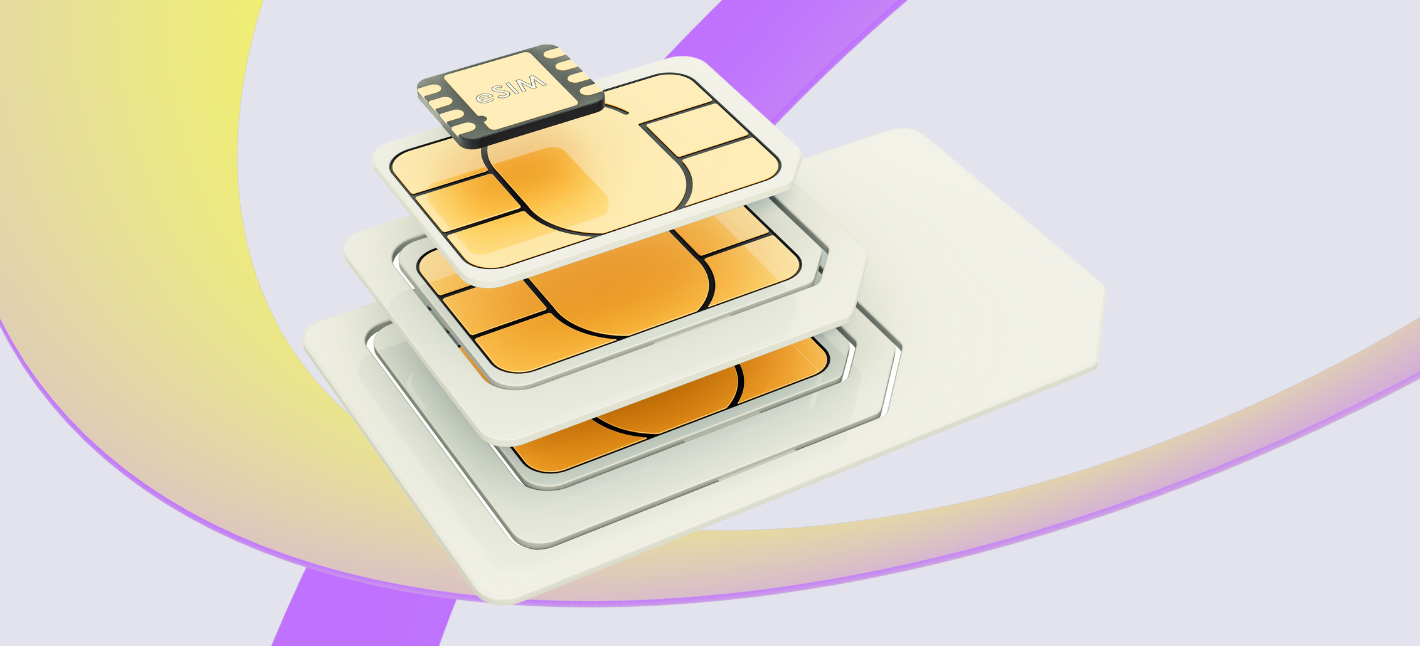Connectivity Management Platform IoT Quick Overview of IoT Connectivity Types
Web Connectivity In IoT Security and Connectivity in IoT
The evolution of smart homes has reworked the best way we work together with our residing areas. At the core of this transformation lies the need for efficient IoT connectivity options. These options combine varied gadgets, enabling seamless communication and automation, making life more convenient and efficient.
IoT, or the Internet of Things, refers again to the interconnected community of units that talk over the web. For smart houses, this implies home equipment, security methods, heating and cooling items, and even lighting can be controlled remotely and work in conjunction with one another. Selecting one of the best IoT connectivity solutions is thus important for ensuring optimal performance and a cohesive smart residence expertise.
IoT Connectivity Technologies Overview and Definition of IoT Connectivity
Firstly, Wi-Fi remains a dominant selection for connecting smart home units. Its widespread availability and compatibility with nearly all smart units make it an accessible possibility. High-speed web connections enhance the functionality of smart gadgets, allowing them to function smoothly. However, as the variety of units in a house increases, competition for bandwidth could end in connectivity issues.
Zigbee is one other outstanding connectivity answer, significantly favored for its low energy consumption and mesh networking capabilities. This protocol enables gadgets to speak with one another instantly, enhancing reliability and range. Zigbee units form a mesh network, which means that they can relay messages to and from each other. This is especially useful for larger properties the place Wi-Fi signals might struggle to cowl each space.
IoT Connectivity Sim Securing IoT Connectivity Solutions
Z-Wave serves as an various selection to Zigbee with related benefits but some distinct variations. Z-Wave’s concentrate on home automation ensures that gadgets from various manufacturers can coalesce into a unified community. The technology is designed primarily for smart house units, making it extremely specialised. Moreover, whereas Zigbee operates on the two.4 GHz frequency, Z-Wave utilizes decrease frequencies, which can present better penetration through partitions and other obstacles.
Bluetooth is often used for short-range system communication. Its low energy consumption is ideal for units that don't require continuous connectivity. Many smart residence merchandise, corresponding to smart speakers and lights, utilize Bluetooth, allowing for simple pairing and use. However, its limitations in vary imply it's typically not suitable as a backbone for a whole smart home system.
LPWAN, quick for Low Power Wide Area Network, caters to gadgets that require long-range communication while consuming much less energy. Technologies like LoRa and Sigfox fall beneath this class. These networks are significantly advantageous for sensors and units spread out over large areas. In smart properties, they can be used for environmental monitoring systems that track temperature, humidity, or air quality.
M2M IoT Connectivity Tips for Choosing IoT Connectivity Solutions
Cellular networks present an various choice for connecting smart units, particularly in areas the place Wi-Fi isn’t reliable. Cellular technology permits devices to connect on to cell networks, which could be helpful for houses in remote locations. While usually dearer than other options, the reliability and coverage of cellular networks make it a worthy consideration.
The integration of a quantity of connectivity solutions is key for attaining an adaptable smart residence. A hybrid system that combines Wi-Fi, Zigbee, Z-Wave, and Bluetooth can successfully address numerous needs within a sensible home. This method ensures that units can talk effectively, regardless of their individual necessities or limitations.
Security should be a major concern when deciding on IoT connectivity solutions. Each protocol comes with its own set of vulnerabilities, and as smart houses turn into more prevalent, the potential for cyber threats increases. Manufacturers prioritize securing connections via encryption and regular updates, but customers must additionally take proactive measures, corresponding to changing default passwords and setting up two-factor authentication.

Interoperability remains a significant problem in the house of smart house connectivity. Different producers usually use proprietary technologies, leading to compatibility points. Solutions that prioritize open standards are more and more most well-liked, as they permit for seamless integration of gadgets from numerous manufacturers. This flexibility allows shoppers to customise their smart house techniques with out being locked right into a single brand.
Internet Connectivity Principles In IoT Simplifying Global IoT Connectivity with eSIM
In addition to enhancing connectivity between devices, IoT solutions must additionally give consideration to consumer experiences. The control interfaces offered by manufacturers, whether or not via cellular apps or internet platforms, must be intuitive and user-friendly. Consumers ought to be capable of simply handle and automate their gadgets with out extensive coaching or technical know-how.
Cloud-based options are an indispensable part of modern smart houses. They provide centralized management, information analytics, and distant entry capabilities. By utilizing cloud providers, users can management their smart properties from anywhere on the earth. This is especially helpful for safety monitoring and adjusting home settings whereas away, making certain peace of mind.
As smart house technology continues to evolve, it holds the potential to considerably reduce energy consumption. IoT units may be programmed to function throughout off-peak hours or regulate settings primarily based on real-time data, similar to electrical energy charges. This not solely reduces Full Report costs for owners but additionally contributes positively to environmental sustainability.
Cloud Connectivity In IoT Survey on IoT Connectivity Technologies and Applications
Looking into the future, the demand for more advanced and efficient IoT connectivity options will solely grow. As shopper consciousness and adoption of smart technologies improve, the focus will shift in course of creating extra built-in ecosystems. Innovations like synthetic intelligence and machine studying can further enhance the performance of smart homes, enabling devices to learn consumer preferences and automate processes dynamically.
The development of 5G expertise is ready to revolutionize smart house connectivity. Its greater speeds and decrease latency can increase the probabilities for real-time data transmission and control. With this advancement, devices can communicate instantaneously, paving the finest way for extra complex and interdependent systems.

In conclusion, because the panorama of smart properties continues to expand, exploring one of the best IoT connectivity options becomes essential. Each technology presents distinctive benefits and challenges, and the optimal resolution often involves a combination of several. Understanding the nuances of each protocol permits owners to create methods tailored to their specific needs, finally leading to more environment friendly, secure, and pleasant dwelling spaces.
- Wide Area Networks (WAN) facilitate long-range connectivity, ensuring that smart gadgets communicate effectively throughout bigger properties or neighborhoods.
- Low Power Wide Area Networks (LPWAN) are perfect for connecting battery-operated units, offering prolonged battery life and longer transmission distances whereas sustaining low costs.
- Wi-Fi 6 expertise enhances smart residence systems' efficiency by supporting multiple gadgets concurrently, guaranteeing seamless connectivity without latency issues.
- Bluetooth Mesh Networks enhance the range of Bluetooth units, permitting for a extremely environment friendly communication community amongst smart units throughout the house.
- Zigbee is an energy-efficient protocol designed specifically for smart residence gadgets, offering sturdy safety features and easy integration with various platforms.
- Thread expertise creates a scalable, resilient community for connected units, guaranteeing low energy consumption while also supporting direct, secure communication.
- Cellular IoT solutions provide dependable connectivity with out relying on native infrastructure, making them invaluable for distant monitoring and management of smart home devices.
- Satellite connectivity can serve areas with restricted ground network coverage, facilitating smart house solutions in rural or isolated areas.
- Hybrid connectivity approaches combine a number of technologies to make sure uninterrupted service, optimizing efficiency primarily based on the home's particular necessities and layout.
- Edge computing capabilities in smart home ecosystems improve knowledge processing velocity and reduce latency, permitting for smarter and extra responsive gadget interactions.undefinedWhat are the top IoT connectivity solutions out there for smart homes?
IoT Connectivity Products Future of IoT Technology Connectivity

The greatest IoT connectivity solutions for smart properties embody Wi-Fi, Zigbee, Z-Wave, Thread, and LoRa. Each of these technologies provides distinctive benefits relying on components like range, energy consumption, and device compatibility.
How do I select one of the best connectivity solution for my smart home devices?
IoT Connectivity Definition Security and Connectivity in IoT
Consider factors just like the types of gadgets you should connect, the vary required, and energy consumption. Wi-Fi is often best for high-bandwidth purposes, whereas Zigbee and Z-Wave are perfect for low-power devices over short distances.
Is Wi-Fi an excellent choice for all smart residence devices?
IoT Connectivity Companies Survey on IoT Connectivity Technologies and Applications
While Wi-Fi offers excessive bandwidth, it could Continue eat extra energy and will not be suitable for all low-power IoT units (IoT Connectivity Market). For smaller devices like sensors, Zigbee or Z-Wave can be more environment friendly.
What is the difference between Zigbee and Z-Wave?
Zigbee operates on 2.4 GHz and has a larger number of compatible devices, while Z-Wave uses sub-GHz frequencies, permitting for higher penetration through walls. Both are great for low-power, low-bandwidth functions.
IoT Connectivity Security Platforms for IoT Connectivity Management
Can I combine multiple connectivity options in my smart home?
Yes, many smart house ecosystems permit integration of multiple protocols. Using a wise hub can help handle units that function on different connectivity standards seamlessly.
Connectivity Management Platform IoT Comparison Guide for IoT Connectivity
How safe are these IoT connectivity solutions?
Security levels vary by expertise. Zigbee and Z-Wave use encryption to secure data transmission, while Wi-Fi security is decided by your router settings. Regularly updating firmware can help improve security for all units.
Wireless IoT Connectivity IoT Connectivity Management for Solutions
What is the function of a sensible hub in IoT connectivity?
- IoT Connectivity Control
A smart hub centralizes control of assorted smart house units, permitting them to communicate and work collectively even if they use completely different connectivity protocols. It simplifies automation and administration.
Are there any costs related to implementing these solutions?
Connectivity Management IoT Quick Guide to IoT Connectivity
Costs can vary greatly based mostly on the technology chosen and the number of devices. Initial setup costs might embody buying compatible units, smart hubs, and ongoing energy bills.
How do I ensure my units stay compatible as know-how evolves?
Opt for devices that follow open standards and are regularly updated. Using a well-known model or a smart house platform that prioritizes compatibility also can assist scale back future compatibility points.